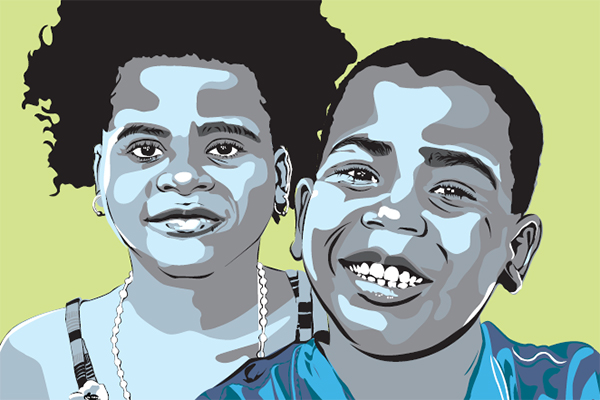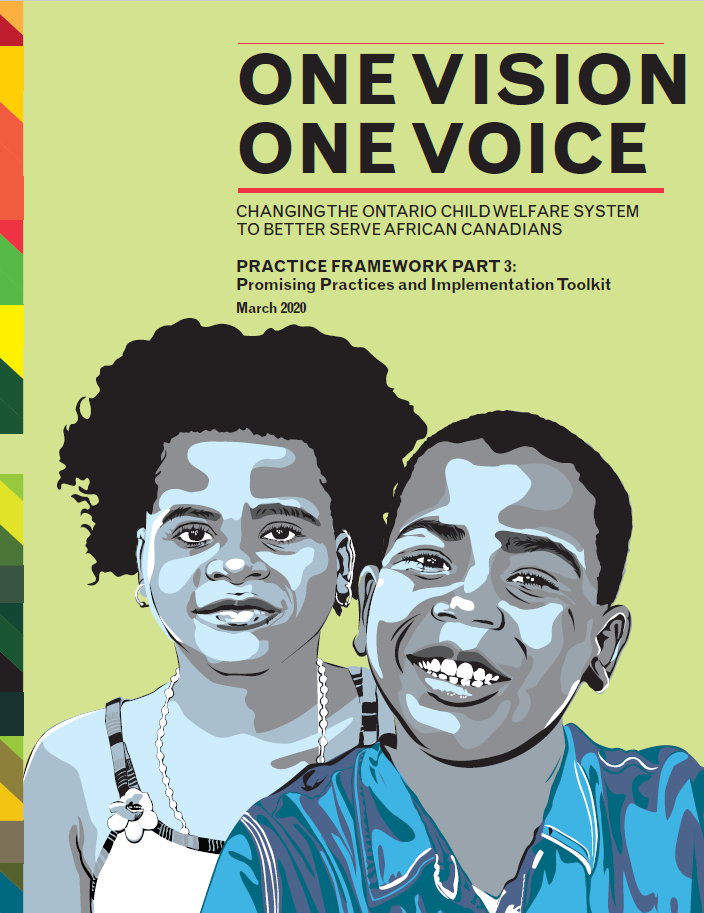The One Vision One Voice program recently launched a new promising practices and implementation toolkit to support Children’s Aid Societies and Indigenous Child and Family Well-Being Agencies in their work to address anti-Black racism and the overrepresentation of African Canadian children, youth, and families in the Ontario child welfare system. Here are three things you need to know about Practice Framework Part 3.
1
The toolkit is straightforward and designed to lead Children’s Aid Societies and Indigenous Child and Family Well-Being Agencies through implementation of the 11 Race Equity Practices step-by-step with assessment guidelines, activities, and practice recommendations to assist users in sharing, monitoring, and evaluating the information efficiently and effectively.
2
There are several resources and references to help child welfare agencies throughout the process. The toolkit provides case studies, articles, examples, and tracking mechanisms to guide users with an emphasis on anti-Black racism, the effects on the child welfare system, and ways to address and improve concerns utilizing the 11 Race Equity Practices.
3
We are here to support you. The toolkit was created to lead you through the process, based on consultation and recommendations from subject matter specialists, the community, and those who care and are invested in seeing changes to how the child welfare system serves African Canadians. The One Vision One Voice team is here to support you and we are committed to this process and an outcome we can all be proud of.
WORDS FROM OVOV PROGRAM MANAGER, KEISHIA FACEY: “What’s most exciting about the toolkit is that you can recognize that so much work has been put into it. The intention is for agencies to be able to embed the 11 Race Equity Practices into the work they’re currently doing. The toolkit urges agencies to continue to monitor their processes and update their implementation plan after a period of reflection. Through this analysis and reflection, we’ll all be able to make the changes that are necessary to really address anti-Black racism in the child welfare sector.”
WORDS FROM OACAS CEO, NICOLE BONNIE: “We’re pleased to launch this next part of the One Vision One Voice program, because it’s a practical tool to help Children’s Aid Societies and Indigenous Child and Family Well-Being Agencies better serve and support African Canadian children, youth, and families in their communities, as well as their Black staff. We know there is still much work to do to address issues of overrepresentation and disparate outcomes. And this is one of the tools that is going to help us get there.”
The full Practice Framework Part 3: Promising Practices and Implementation Toolkit is available here.
Want to learn more about the One Vision One Voice program and the work the Ontario child welfare sector is doing to address anti-Black racism? Visit the program page or contact the One Vision One Voice team at onevisiononevoice@oacas.org

